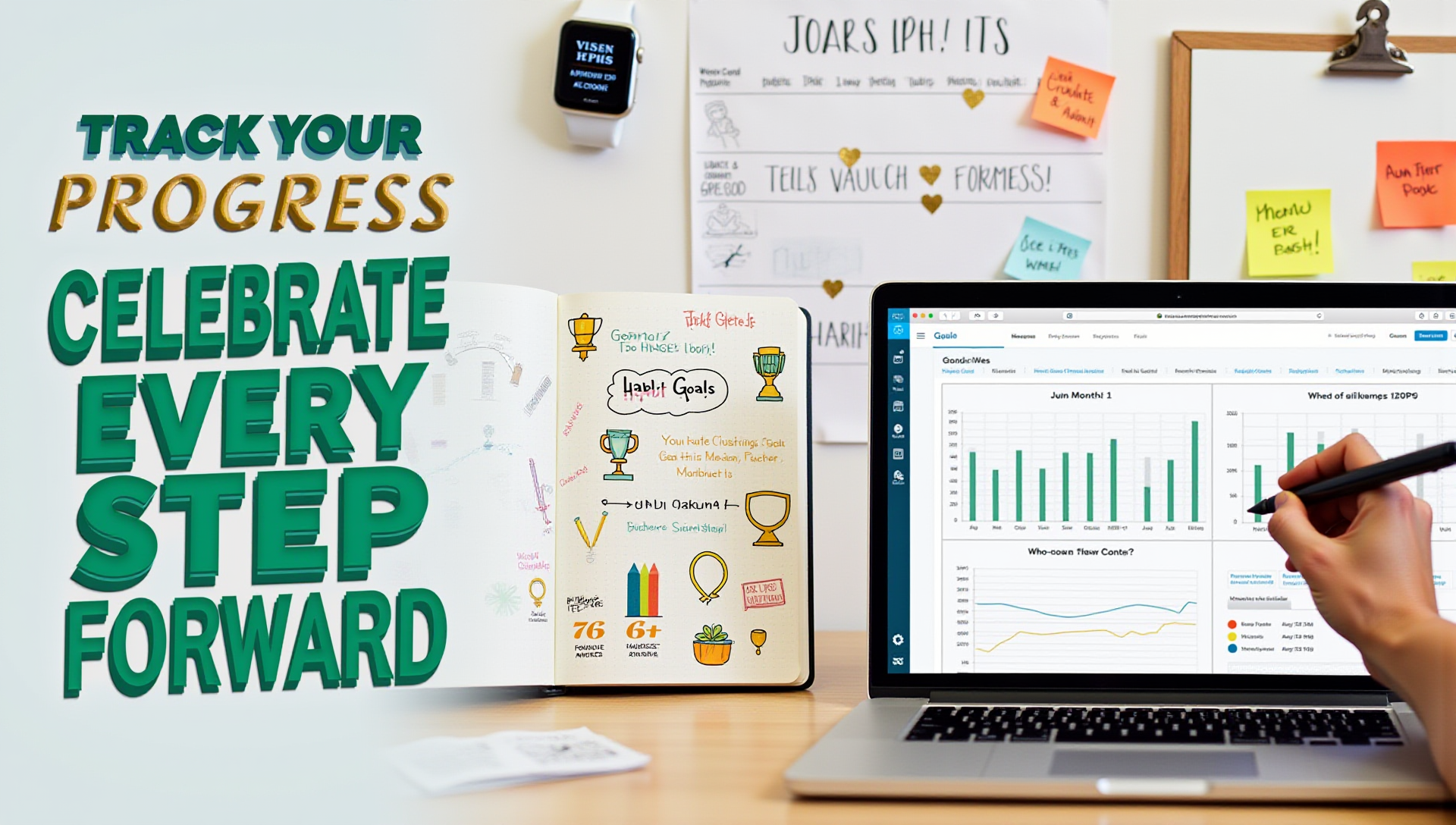 Tracking Progress: Tools and Tips to Stay on Goal
Tracking Progress: Tools and Tips to Stay on Goal
In the pursuit of financial goals—whether it’s paying off debt, saving for a dream vacation, building an emergency fund, or investing for retirement—setting goals is only the beginning. The real magic happens in the tracking. Without consistently monitoring progress, it’s easy to drift off course, lose motivation, or make financial decisions that undermine your hard work.
In today’s fast-paced, digitally connected world, where distractions and unexpected expenses are part of daily life, tracking your financial progress is more important than ever. Fortunately, the right tools, mindset, and small habits can keep you focused, motivated, and moving toward your goals.
Why Tracking Progress Is Crucial
Imagine setting out on a road trip without a map or GPS. You might have a general direction in mind, but without frequent course checks, you’re likely to get lost. The same principle applies to financial planning.
Here’s why tracking progress is essential:
- Provides clarity: It shows you exactly where you stand in relation to your goals.
- Boosts motivation: Seeing small wins keeps you engaged and committed.
- Informs decisions: Knowing what’s working (and what’s not) helps you adjust your strategy.
- Prevents backsliding: Regular check-ins make it harder to ignore bad habits or costly mistakes.
Types of Financial Goals to Track
Before diving into tracking tools and tips, it helps to categorize your goals. Each type may require a different tracking approach:
- Short-term goals (0–1 year)
- Example: Save $1,200 for a holiday by December.
- Medium-term goals (1–5 years)
- Example: Pay off $10,000 in credit card debt.
- Long-term goals (5+ years)
- Example: Save $300,000 for retirement.
- Behavioral goals
- Example: Stick to a monthly grocery budget, avoid impulse spending, or automate savings.
Understanding what you’re aiming for helps you choose the most appropriate tools and strategies.
Essential Tools for Tracking Financial Progress
There are dozens of apps, spreadsheets, and analog systems available. The key is to find one that fits your personality and lifestyle.
1. Budgeting and Tracking Apps
These platforms help you monitor income, spending, savings, and debt repayment in one place.
- YNAB (You Need A Budget): Great for goal setting and assigning every dollar a job.
- Mint: Syncs with bank accounts to categorize transactions and track goals.
- PocketGuard: Helps you avoid overspending by showing how much you have “left to spend.”
- Goodbudget: Uses envelope-style budgeting, great for couples or shared goals.
Example: Sarah wanted to track her student loan payoff goal. She used YNAB to set monthly payoff targets, allocate extra income toward debt, and track progress visually. Within two years, she was debt-free—six months ahead of schedule.
2. Spreadsheets
If you prefer customization and offline access, spreadsheets are a versatile option.
- Use Google Sheets or Excel to create templates for savings, debt payoff, or net worth.
- Track inputs like income, spending, and balances manually or by importing CSV files.
Pro Tip: Color-coded progress bars and formulas that calculate percentage completion make spreadsheets more visual and motivating.
3. Goal-Tracking Apps
Not all financial goals are strictly about money; some are behavioral or habit-based.
- Habitica: Gamifies habit-building, including financial habits.
- Strides: Allows custom financial goals with milestones and streak tracking.
- Trello or Notion: Use boards or pages to organize financial goals, deadlines, and updates.
Example: Alex used Strides to track his no-spend days, logging progress each week. This habit helped him save $200 monthly by curbing unnecessary purchases.
4. Banking Tools
Many banks and credit unions now offer built-in goal trackers, spending categories, and alerts.
- Set savings goals and automate transfers
- Categorize spending for easy analysis
- Receive weekly summaries and alerts when you overspend
Tip: Log in weekly to review your financial dashboard and track how close you are to your targets.
How to Track Progress Effectively
1. Break Down Big Goals
Large goals can feel overwhelming. Break them into smaller milestones.
Example: If your goal is to save $5,000 in a year, break it down:
- $417 per month
- About $14 per day
Celebrate each $1,000 saved as a milestone. These smaller wins create momentum and motivation.
2. Set Check-In Points
Schedule regular intervals to review your progress:
- Weekly: Monitor spending and small wins
- Monthly: Track goal progress, make adjustments
- Quarterly: Assess your strategy and celebrate milestones
Add reminders to your calendar, or set app notifications to stay accountable.
3. Visualize Your Progress
Humans are visual creatures. Use charts, graphs, or trackers to bring your goals to life.
- Thermometer charts for savings goals
- Debt payoff “mountains” or coloring sheets
- Digital dashboards with pie charts and trend lines
Example: Natalie printed a coloring chart for her $20,000 debt. Every time she paid off $500, she colored in a segment. This visual reminder on her fridge kept her on track for over a year.
4. Use Positive Reinforcement
Reward yourself for hitting milestones. Choose non-financial (or low-cost) rewards to stay aligned with your goals.
- Treat yourself to a movie night
- Take a day trip
- Enjoy a guilt-free splurge—within reason
Warning: Avoid “over-rewarding” with expensive purchases that cancel out your progress!
5. Share Your Progress (If You’re Comfortable)
Accountability can boost commitment. Share your goals and progress with:
- A trusted friend or accountability partner
- Social media (many people post debt payoff journeys or savings updates)
- A financial coach or planner
Example: Mia started a personal finance Instagram to share her savings journey. The supportive community helped her stay focused and inspired others too.
Common Challenges and How to Overcome Them
1. Inconsistency
Missed a check-in or forgot to log a few expenses? No problem. Start again without guilt. Progress isn’t linear.
2. Burnout or Boredom
Keep your motivation fresh by revisiting your why—why you started the goal in the first place.
3. Life Happens
Unexpected costs or job loss? Adjust the timeline, not the goal. Flexibility is key to staying on course long-term.
Final Thoughts: The Power of Measuring What Matters
Setting financial goals is admirable, but tracking progress is where the transformation happens. It’s how you stay engaged, adjust your strategies, and ultimately win with your money.
By using the right tools and techniques, you turn goals from distant dreams into daily actions. You’ll be surprised at how motivating it is to see your savings grow, your debts shrink, and your financial confidence soar.
Next Steps:
- Choose a tracking method that fits your style.
- Set your first financial milestone.
- Schedule your first progress check-in.
- Celebrate the journey—not just the destination.
Remember: What gets measured gets managed. Start tracking today—and get one step closer to the future you deserve.



